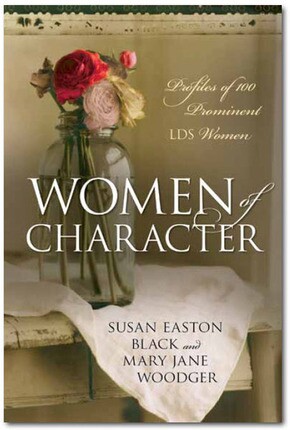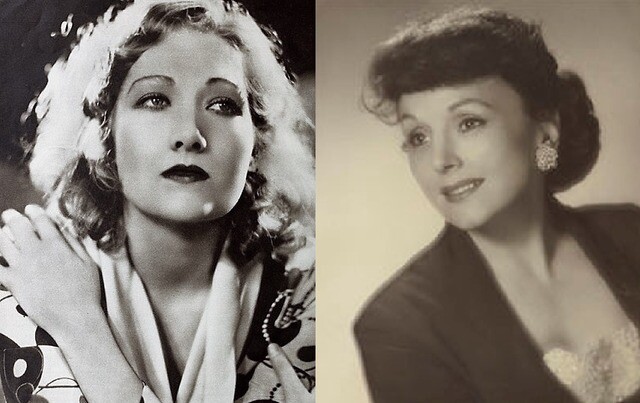Throughout history, the arts have been greatly benefited by women—including Latter-day Saint women. While there are many women whom we could recognize, here are eight who have stood firm in their beliefs as they followed their passions.
The following is adapted from Susan Easton Black and Mary Jane Woodger’s book Women of Character: Profiles of 100 Prominent Latter-day Saint Women.
Edwina Booth: Refusing to Bend
Edwina Boot

h—the stage name of Josephine Constance Woodruff—was a leading actress of the early “talkie” period. In 1926 Edwina got her first bit part in a silent movie; other roles followed. By 1930 Hollywood had opened its doors to Edwina, but not all was to her liking. She did not “subscribe to [Hollywood’s] easy standards and soft morals.” When a movie producer asked her to spend the weekend with him at a mountain cabin, she replied, “I would love to come. I’ll bring my mother and you bring your wife.” When another producer asked her to sign a seven-year contract with the stipulation that her body went with the contract, she refused. She became known as “that Mormon girl” who would not bend standards to get ahead in Hollywood. Yet she succeeded.
Edwina is most remembered for her leading role in Trader Horn. The movie was a box office success, garnering an Academy Award nomination for best picture. She acted in three more films for independent producers before she collapsed in 1932. “I had driven myself as far as I could go,” she said. “I had to lie down and rest.”
Image from Wikimedia Commons
Wynetta Willis Martin Clark: Fearlessly Facing Racism
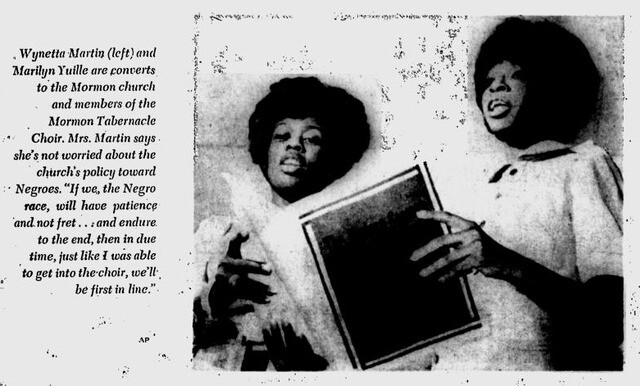
One of the first African-Americans to sing with the Tabernacle Choir, Wynetta Willis Martin Clark says, “I think many times the acceptance has been more difficult on my part, acceptance of myself for what I am, obviously, colored; and accepting white people’s kindness and friendship, inside the Church.” She laments, “The hurts of many, many small slights, both imagined and real, heal, but always I feel faced with new wounds opening, as I try to turn away from snubs, and from derision, from forced toleration that is suffocation and an insult to me.”
As she learned more about the Church, Wynetta developed a strong desire to take her daughters to Salt Lake City and audition for a position in the Tabernacle Choir. “I knew I could sing, but I did not know whether I could sing well enough for this magnificent choir,” she said. To her surprise, she was invited to join the choir after her audition. The first time she sat in the choir at a general conference session, it was like a dream come true.
Wynetta toured with the choir for two years. During the choir’s many performances throughout the nation and in various countries of the world, Wynetta believed her “personal mission was to prove to the world” that the Church welcomed African-Americans. During those tours, she was also instrumental in sharing the gospel in word and song with those of differing nationalities and cultures.
In 1970 Wynetta was hired by Brigham Young University to help in the training of nurses, becoming the first African-American faculty/staff member at the institution. As she shared her experiences, she sensitized future nurses to cultural differences between races. She also served as a research consultant on Black culture.
Image found on www.christopherrandallnicholson.com
► You'll also like: Sistas in Zion: How 2 Black Latter-day Saint Women Are Breaking Stereotypes
King Sisters: Putting Family First
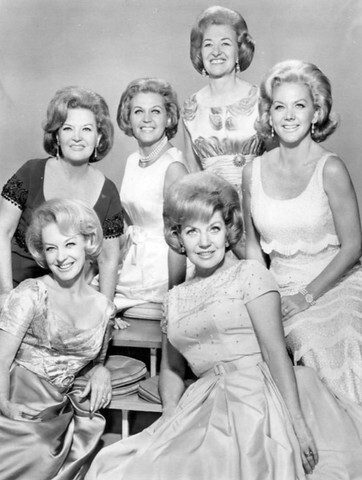
The King Sisters—Donna, Yvonne, Louise, and Alyce—were the dynamic, swinging sisters of the Big Band era. Their billing as the most technically accomplished vocal group was not hyperbole. Their “unfailing sense of rhythm, perfect intonation and bubbly personalities” won the heart of America. What Americans did not know was that family came before show business in their lives.
By 1935 the sisters took their father’s middle name, King, and formed the King Sisters. That year, they accepted their first on-the-road employment with bandleader Horace Heidt. “Heidt was hard to please, very strict,” recalled Donna. Due to Heidt’s uneven temperament, the King Sisters left his band and joined legendary guitarist Alvino Rey and his orchestra.
Their first smash hit was a vocal version of the Glenn Miller hit “In the Mood.” This was followed by a concert at the Pasadena Civic Auditorium, where more than four thousand fans came to cheer for them. “That’s when we realized just how many people were listening to our KHJ broadcasts,” said Donna. The broadcasts had made them radio stars. Over the airwaves, their lively personalities were almost as important as the songs they sang.
In 1939 the King Sisters were asked to join the Glenn Miller Orchestra. The temptation to ditch Alvino Rey was real, but loyalty was at stake: by this time, Rey had married one of the King Sisters. Ever true to family, the opportunity was declined. Most critics say that this decision was not in their best interest.
“We had lots of opportunities to make major career moves that definitely would’ve made the King Sisters more successful, but we always followed our hearts and did what we thought was right for our families,” said Donna. “I wouldn’t trade what we have now for anything in the world, which is all our family who support and really care about each other.”
Image from Wikimedia Commons
► You'll also like: Did You Know the First Woman Mayor with an All-Woman Town Council Was a Latter-day Saint?
Liriel Domiciano: Standing as a Witness of God at All Times

Liriel Domiciano became an icon for Brazilian youth after applying to be a seamstress for a bridal fashion show and auditioning as a wedding singer for the show at the same time. Within 48 hours, 19-year-old Liriel received 10 job offers to sing. Learning of her fortune, friends encouraged her to try out for Brazil’s largest televised talent competition, the Raul Gil Amateur Show (a Brazilian equivalent to American Idol). She passed the stress-filled audition and was given the opportunity to share her talent on national television.
Liriel wanted very much to let the television audience know that she was a Latter-day Saint—standing as a witness of God at all times and in all places—but she had been told she could not say anything about her religion on the air. After praying in her stage room before her first performance, she looked up and saw her Young Women medallion. It was the answer she had been looking for. She wore her medallion during television performances and in this subtle way let viewers know that she was a member of the Church. In front of millions of viewers, she stood as a witness for Christ.
In 2004 Liriel performed in a program held to celebrate the rededication of the São Paulo Temple. President Gordon B. Hinckley heard her performance and was so impressed that he invited her to sing in general conference with the Tabernacle Choir. When a producer learned that Liriel would be turning down his offer to perform without pay with the Tabernacle Choir, he became irate and warned her that his offer “wouldn’t be there when she returned.” Liriel said, “To sing for money is one thing, but the choir sings for no money, just the spirit.” She performed magnificently.
As Liriel gains popularity as one of Brazil’s most sought-after celebrities, she continues to stand as a witness for Christ. Her example of a faithful Latter-day Saint woman blesses the lives of youth throughout her nation and the world.
Photo by Ravell Call from Deseret Morning News
► You'll also like: 5 Conference Talks by Women All Latter-day Saints Should Read
Rose Marie Reid: Advocating Modesty
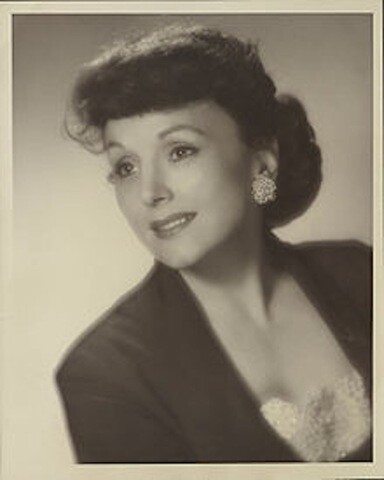
Rose Marie Reid exemplified being a strong and devout member of The Church of Jesus Christ of Latter-day Saints despite the glamour of Hollywood and celebrity life. As a result, she succeeded in the fashion world without straying from her beliefs about modesty.
The daughter of Elvie and Marie Yancey, Rose Marie Reid was born September 12, 1906, in Cardston, Alberta, Canada. Rose Marie learned many of her designing and sewing skills from her mother.
Rose Marie moved to Vancouver, British Columbia, and began taking swimming lessons from Jack C. Reid; she soon fell in love with him, and they planned to marry. Jack, who spent many hours at the swimming pool, was not happy with the swimsuits of the day. They were made of wool, and when soaked in water became heavy and uncomfortable. Rose Marie decided to make a new swimsuit for Jack; she cut a pair of swim trunks from an old duck-fabric coat and laced the sides for a snug fit. Jack loved the suit and wanted Rose Marie to design similar suits for the Hudson Bay Department Store to sell.
Leery of selling swimsuits, Rose Marie turned to the Lord, kneeling in prayer and asking if God wanted her to make bathing suits. The day after she received an affirmative answer, Rose Marie found some beautiful fabric with which to make a woman’s swimsuit with laces up the sides. Seeing the design, the Hudson Bay buyers ordered ten dozen men’s and six dozen ladies’ suits—and Reid Holiday Togs, Ltd., began.
In the 1960s, Rose Marie’s business started to decline with the popularity of the bikini. She refused to design a bikini, advocating modest one-piece swimsuits. She left her company in 1962, claiming that the bikini was its “ultimate demise.”
After leaving her company to other designers, Rose Marie was asked by President David O. McKay to redesign the temple garments so women would feel more comfortable and beautiful while wearing them. Rose Marie discovered while working on the garments that she was related to Elizabeth Warren Allred, who helped design the very first garments in this dispensation. Rose Marie wondered if the Lord “[kept] that privilege in our family.”
Image from Mormonwiki.com
To learn more about these and other inspiring Latter-day Saint women, check out Women of Character: Profiles of 100 Prominent Latter-day Saint Women by Susan Easton Black and Mary Jane Woodger.
This book celebrates noble women in The Church of Jesus Christ of Latter-day Saints with one hundred inspiring biographies of Latter-day Saint women who have accomplished the extraordinary, leaving an indelible mark on history. These are stories about life, love, and a remarkable determination to do one's best — messages that reveal to the reader that neither happiness nor greatness is found in compromising self, but instead is found in reaching to a higher source. By reaching up, these women have reached out to make a valuable difference.


